Gamer's dream: ASUS ROG Phone - advantages and disadvantages
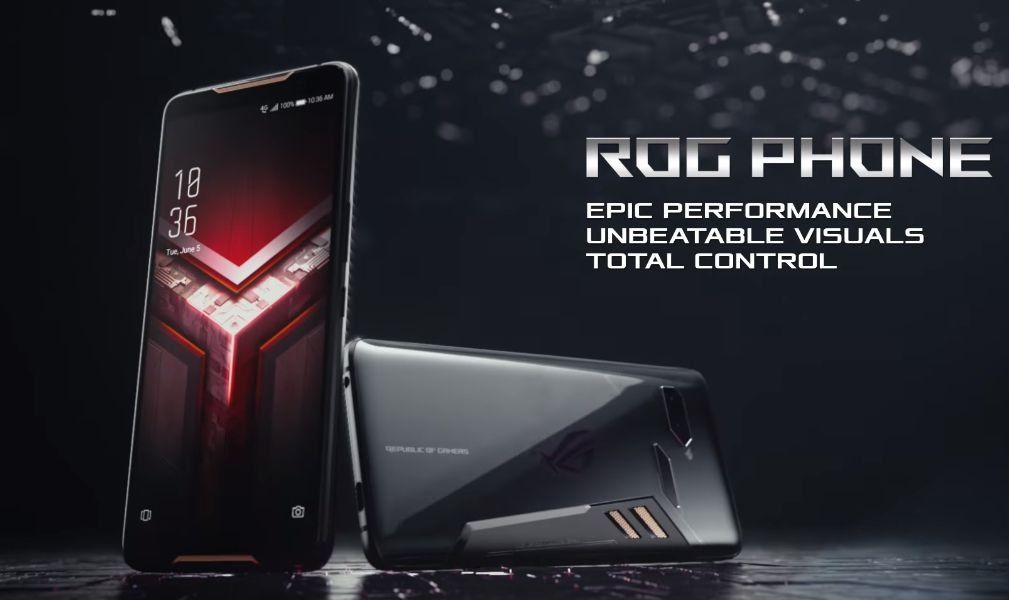
ASUS has been manufacturing computer hardware, laptops and other components of digital technology for a long time. But she is no less known for her gaming accessories under the Republic of Gamers brand. Founded in 2006, the ROG sub-brand quickly established itself as one of the best manufacturers of computer hardware designed specifically for creating gaming solutions.
Until now, she has specialized in computers, laptops and peripherals - keyboards, mice, headsets, etc. But in July 2018, Republic of Gamers turned its attention to the mobile device market. With her usual creativity, she approached the development of a new gaming smartphone ASUS ROG Phone, which almost immediately gathered thousands of laudatory reviews. Let's see if he deserves it or not.
Content [Hide]
Equipment
Already at the unpacking stage, the phone makes it clear that we have the most gaming smartphone in front of us. The box is made in the form of an oblong pyramid in stylish black with beveled corners, similar to a prototype of some futuristic warehouse.
Its content, by the way, is consistent with the external image. So, the kit includes:
- the device itself;
- TypeC cable with a cord length that is visually longer than many models, it also has a fabric winding like that of gaming devices;
- Special adapter with built-in fan and two connectors for TypeC cable and headphones;
- Charger with Quick Charge 4.0+ function.
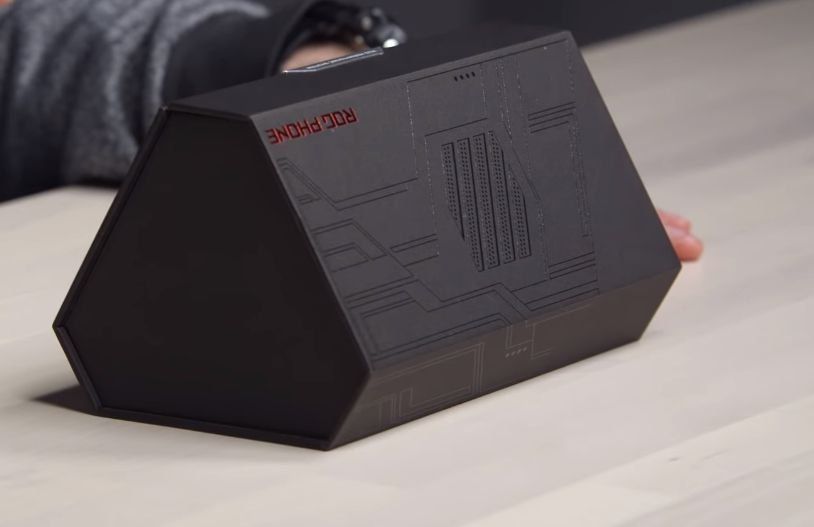
Design
The appearance of the phone demonstrates the beauty of gaming devices. It looks very unusual, especially for a smartphone. More like a professional gaming device. In fact, this is how he positions himself.
The phone case is a metal frame with dust and moisture protection according to the IP68 standard. The back panel is glass. It contains 3D Corning gorilla glass. The double chamber is located on a platform of a non-standard shape in the form of a rectangle with one cut corner. The flash bulb is also a non-standard shape with sharp corners. A little lower is a trapezoidal fingerprint scanner.
On the right side, closer to the middle, there is a cutout in which the exits from the steam chambers used for the processor cooling system are located. Naturally, they are also rectangular in shape.
In the center is the Republic of gamers logo with RGB lighting, which looks very cool. In general, in general, the entire design of the back of the smartphone looks like a demonstration of ASUS's unhealthy love for corners and rectangles. All according to the canons of real gaming design.
Most of the front panel is occupied by a display with an aspect ratio of 18:9, which is covered with a durable protective 2.5D Corning Gorilla Glass without any monobrow. Two stereo speakers at the top and bottom of the panel are designed to create high-quality surround sound in 7.1 format.
On the bottom is a USB TypeC port and a 3.5mm headphone jack.
On the left side is a custom USB TypeC port that acts as a dedicated connector for connecting additional accessories. There is also a Dual sim tray for two SIM cards in Nano-Sim format.
The dimensions of the device are 158.83 x 76.16 x 8.65 mm. At the same time, it has a rather impressive weight of 200 grams.
On the right are the volume buttons and the unlock key. Also on both sides of the right side panel are ultrasonic triggers, Air trigger, using a vibration-based response system. This allows you to feel every touch and not think about whether you pressed the electronic button or not.
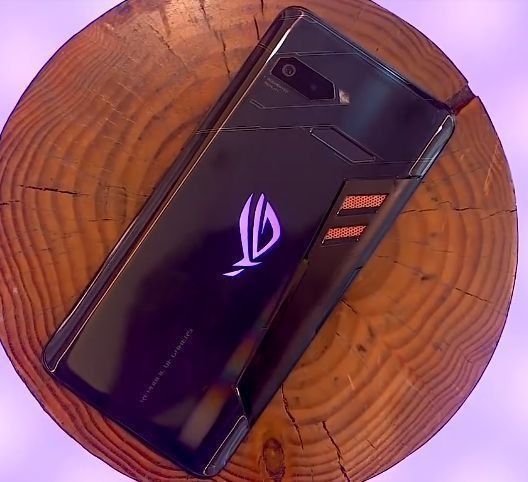
Display
The screen of this wonderful phone is a 6-inch AMOLED with a resolution of 2160x1080 pixels (FullHD +) with a 90-Hz screen refresh rate.
Definitely, the most optimal solution for a gaming smartphone, since at the moment even the most powerful processor cannot guarantee the ideal operation of heavy mobile games at 120 Hz and above.
The display response time is 1ms, which is about 15 times faster than conventional smartphone screens.
With normal daily tasks, this is not noticeable, but in games, especially in dynamic scenes, this can be important and will definitely add pluses to the pleasure of your gaming experience.
The screen has an incredibly rich color gamut, which is a whopping 108.6% of the DCIP3 color space coverage with a crazy contrast ratio of 10,000:1. The screen also has activated modes:
- Gaming HDR
- Mobile HDR;
- SDR to HDR.
They allow you to adapt your phone to different user modes.
In addition, the screen has a multi-touch for 10 touches and supports interacting with the screen while wearing gloves.
In general, the characteristics of the screen are more than impressive.
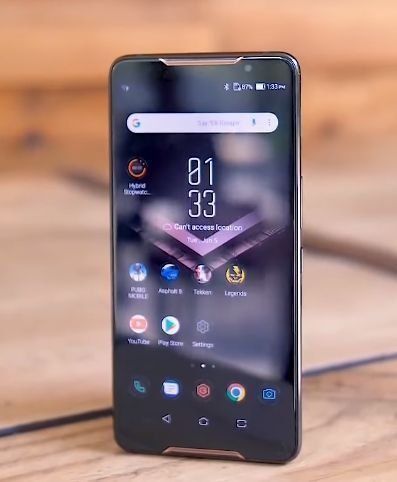
General characteristics
In the table, we will quickly go through its extremely impressive characteristics. However, a detailed consideration is clearly indispensable here, because it seems that every centimeter of the phone is trying to arouse admiration from a potential buyer.
| Main characteristics | ASUS ROG Phone |
|---|---|
| Net: | GSM/GPRS/EDGE, WCDMA/HSPA+/DC-HSPA+, TD-SCDMA, CDMA2000, FDD-LTE, TD-LTE |
| Platform: | Android 8.1 Oreo with ROG Gaming X UI |
| Display: | 6", 2160 x 1080 pixels, AMOLED, 90Hz, 550nits, 10,000:1, 1ms response time, DCI-P3 108.6%, Always On, HDR, 2.5D Gorilla Glass |
| Camera: | dual, 12 MP (Sony IMX363, phase detection autofocus, f / 1.8, 6 lenses, 83 degrees, four-axis OIS) + 8 MP wide-angle (120 degrees), flash, AI, video recording in . |
| Front-camera: | 8 MP, aperture f/2.0, 84 degrees |
| CPU: | 8 cores, 10 nm, up to 2.96 GHz Qualcomm Snapdragon 845 |
| Graphics chip: | Adreno 630 |
| RAM: | up to 8 GB |
| Inner memory: | 128/512 GB UFS 2.1 |
| Memory card: | No |
| Navigation: | A-GPS, GLONASS, Beidou |
| WIFI: | Wi-Fi (802.11a/b/g/n/ac/ad), Wi-Fi Direct |
| Bluetooth: | 5.0 |
| Sensors and scanners | Fingerprint Scanner, Face Recognition, Ultrasonic AirTriggers, NXP 9874 Amplified Stereo Speakers |
| Battery: | 4000 mAh, Quick Charge 4.0+ 30W |
| Dimensions: | 158.83 x 76.16 x 8.65mm |
| The weight: | 200 g |
| NFC system | There is |
CPU
This colossus has the most powerful, nimble and productive processor available at the moment, the 8-core Qualcomm Snapdragon 845. Yes, not a simple one, but an OS version overclocked specifically for this device.
It is built on a single-chip platform, like all other Snapdragon processors.
Its computing power is determined by 4 Kryo 385 Gold cores, which in the regular version of the Snapdragon 845 operate at a frequency of 2.8 GHz. Here they are overclocked to 2.96 GHz. Moreover, according to the assurances of the manufacturers, it is able to keep this frequency for an arbitrarily long time in games.
These four cores are used to perform the heaviest and most demanding tasks, and they consume most of the energy used by the processor for work.
The other four cores are called energy efficient and are used for everyday tasks such as working with firmware and routine computing. They consume significantly less energy, operate at a frequency of 1.8 GHz and are called Kryo 385 Silver.
The processor itself is based on Samsung's latest generation process technology: 10nm LPP FinFET.
Unlike the LPE technology used in previous Qualcomm processors, the new technical solution allowed to increase performance by 10% without increasing power consumption, or reduce power consumption by 15% without losing performance.
By the way, this overclocked processor even exceeds the Snapdragon 850, which is used in ASUS laptops.
Therefore, it is not surprising that according to the results of the synthetic AnTuTu test, a gaming smartphone from ASUS scored 304,000 performance points, which makes it almost the fastest and most powerful in the world at the moment. It is inferior only to Huawei Mate 20, but which of the smartphones will show itself better in games, the question is not even worth it.
The Adreno 630 graphics accelerator, considered the best at the moment, will easily pull out the ultra-graphic settings of any game.


Memory
Of course, the amount of RAM in the gaming device should be as high as possible. ASUS was well aware of this, so they stuffed as much as 8 GB of RAM into the phone. This should be enough for absolutely any game for several years to come.
Although the SIM card slot cannot be used for an additional microSD card, this is not required, since the amount of internal memory in the phone in the basic version is 128 GB, and in the extended version it is as much as 512 GB. So you don't have to worry about running out of space on your phone.
OS and software
The operating system here uses Android 8.1 Oreo with a special gaming firmware ROG Gaming X. The shell has an aggressive design, made in black and red colors, so typical for gaming platforms.
It has a pre-installed ROG Game Center application that allows you to monitor the level of CPU and GPU power used.
It also keeps track of the amount of built-in memory and currently used RAM memory.
In addition, it has fan speed settings in the connected cooling module and lighting on the back cover.
Separately, it is worth mentioning the mode "X-Mode". By activating it, the phone throws all the resources to play gaming applications. RAM is cleared of third-party tasks, previously unused processor cores are used.
Designers even attended to visual changes upon activation. Now, by clicking on the “X” Mode icon, if you use the standard splash screen with a cube, its faces move apart, and the red color of the design becomes even more saturated.
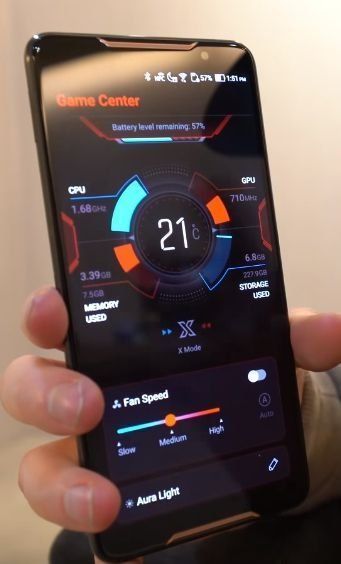
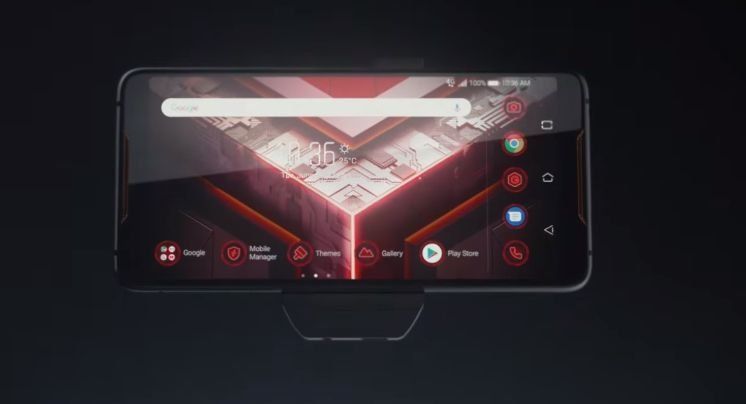
Camera
The rear camera is double.
The main one, despite the small resolution of 12 megapixels, allows you to take high-quality pictures, thanks to the excellent aperture settings at f / 1.8, four-axis optical stabilization and phase detection autofocus. It also has an advanced Sony IMX363 sensor, which allows you to take bright photos even in the dark.
The camera can record video in all currently available formats, including 4K
Also, according to the developers, the now popular artificial intelligence system is used here, which allows you to automatically select the best parameters for the photo when focusing on an object. However, it is often problematic to determine whether it is the merit of AI or the same autofocus.
The additional one has an 8-megapixel sensor with a wide-angle lens that allows you to cover a viewing angle of 120 degrees. Photos on it are quite average, slightly blurry due to the not-so-good f / 2.2 aperture setting.
This is especially noticeable in low light conditions. While not surprising, this is a common problem with all wide-angle cameras in smartphones.
The front camera is not of particular interest.Everything is quite standard: 8MP resolution with a viewing angle of 84 degrees, f / 2.0 aperture, no autofocus. And of course, selfie parameters, as without them. In general, the front camera turned out to be quite mediocre, it clearly does not reach the flagship devices.
Battery
The battery in the phone is very impressive, 4000 mAh. According to the assurances of the developers, it can support the autonomy of the phone with active games up to 7 hours with Wi-Fi turned on. It will be possible to watch videos from YouTube as much as 11.5 hours without a break. If the battery is still dead, then charging does not take much time thanks to Qualcomm Quick Charge 4.0 technology. In 35 minutes, the battery can be charged up to 60% of the total capacity.
This amount of charge is quite enough for comfortable work, besides, the phone already weighs quite a lot, and with a larger battery, the weight could really be a problem, especially considering that the phone is played, usually holding it in weight.
This device, however, provides special accessories for games, but more on that below.
Peculiarities
Electronic triggers
First of all, it is worth talking about the unusual Air Trigger electronic trigger system. They are positioned in such a way that the index fingers rest directly on them during the game. Electronic buttons respond to a pressing force of 20 g and report this with vibration.
They are programmed for various functions. Depending on the game, you can hang various macros on them, or use them for convenient shooting in shooters.
Cooling system
The cooling system, made in the form of steam chambers, works according to the following principle:
A special liquid is pumped inside one of the chambers.As the processor heats up, the liquid evaporates, cooling it down. Then this vapor passes into another chamber, where it is cooled, turns back into a liquid and is sent to the first chamber. With the help of such circulation, cooling is performed.
In addition to the evaporator chambers, the multi-layer cooling system also includes a copper heat sink and a carbon cooling plate.
It sounds, of course, very cool, but there is one question:
The efficiency of this system is highly dependent on the location of the processor. If the processor, as usual, is located on the motherboard from the side of the display, then it will be quite problematic to remove heat from it, despite the copper heat sink. We hope the developer will take this into account.
We'll talk about the second cooling issue when we look at accessories.
Accessories and Peripherals
In addition to the basic configuration of this model, there is also an extended edition. It comes in a stylish case with a combination lock. This is not only a desire to show off a unique box, but a necessity. Since the developers have made a number of additional devices, it would be problematic to fit them into something smaller.
You can also buy them separately, of course.
So let's take a look at them:
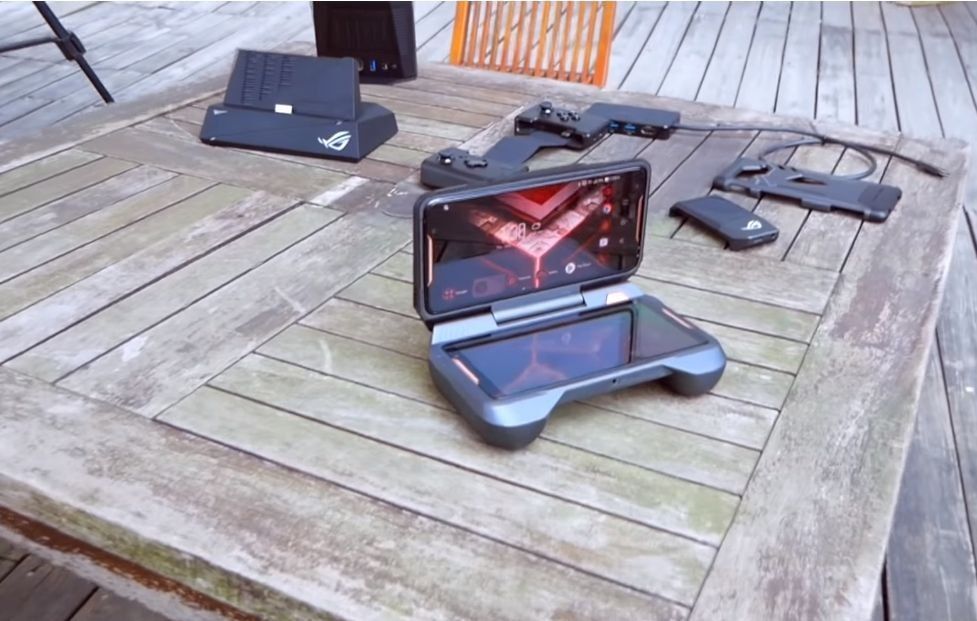
External cooling system AeroActive Cooler
For those who like to play games under the scorching sun, or for additional processor cooling at especially high loads, the kit (even the basic one) includes a removable AeroActive Cooler fan, which is attached to a special connector. It is battery powered and has 2 additional outputs: USB TypeC and 3.5mm audio jack for headphones. They are all brought down so as not to interfere with play.
In general, such an external active CO is a rather interesting solution, however, glass lids, as you know, conduct heat rather poorly, and this fact casts doubt on its effectiveness. Well, okay, let's leave it on the conscience of the developers.
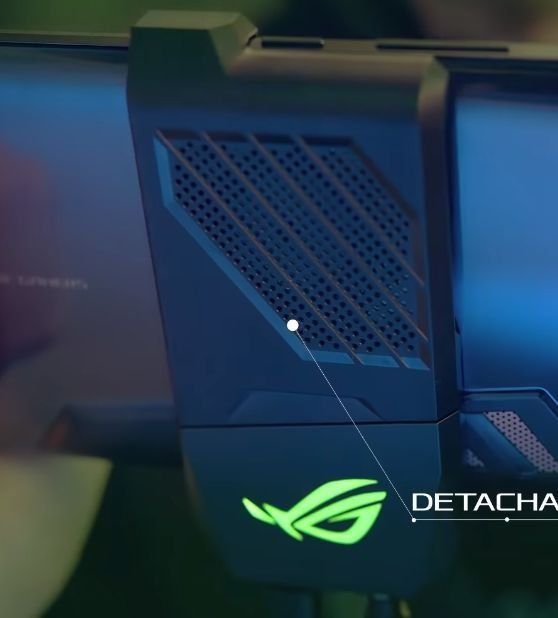
Gamevice Controller
ASUS decided to please console fans with a wonderful addition to their new invention. The controller is divided into two halves, between which a connecting tape is stretched. It is attached on both sides of the phone and turns into a full-fledged game console, like a sony playstation. Although rather, in terms of functionality, it resembles another product from Sony - the Dualshok joystick.
Now all the actions that were previously performed using the on-screen buttons or the gyroscope can be performed using the joystick, which is incomparably more convenient. This accessory is perfect to pass the time on long trips or to keep yourself occupied during a long wait.
It is compact and does not take up much space, so it can easily fit even in a jacket pocket, even in a backpack, and playing with it is a pleasure.
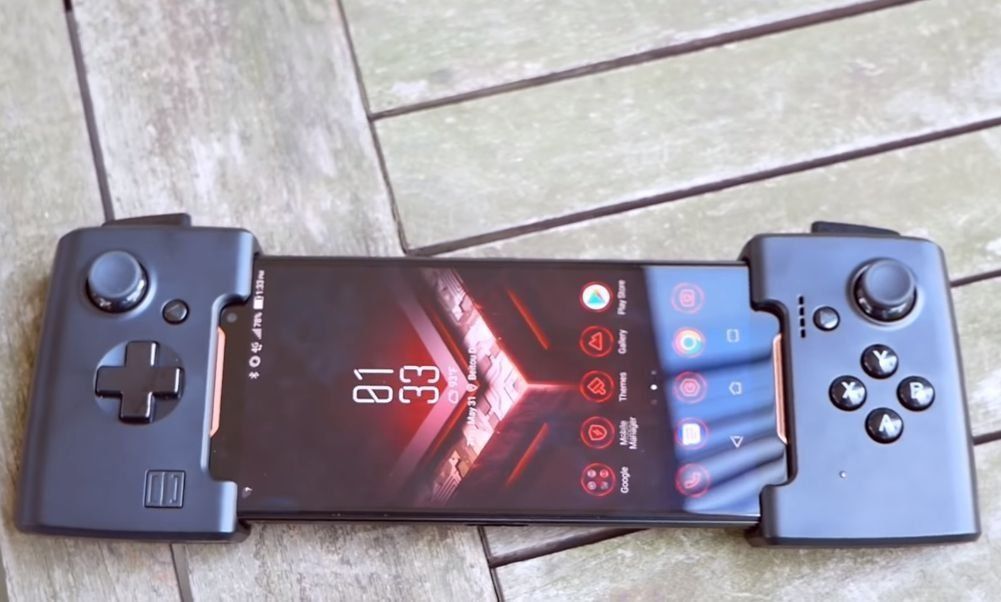
ASUS WiGig Dock - station for fast Wi-Fi connection
This station can be used for high-speed wireless connection to a TV and in general to any device with an HDMI output. The station itself operates from a conventional 220V outlet and is connected via an HDMI cable to the device, and the phone itself is connected to it via the WLAN 802.11ad wireless protocol. It allows you to transfer data at speeds up to 4.6 Gb / s at a distance of up to 10 meters.
When connected through this station, the image will be displayed on the screen almost instantly without any delay.And you can display absolutely everything: from photos to demanding games or videos in 4K resolution.
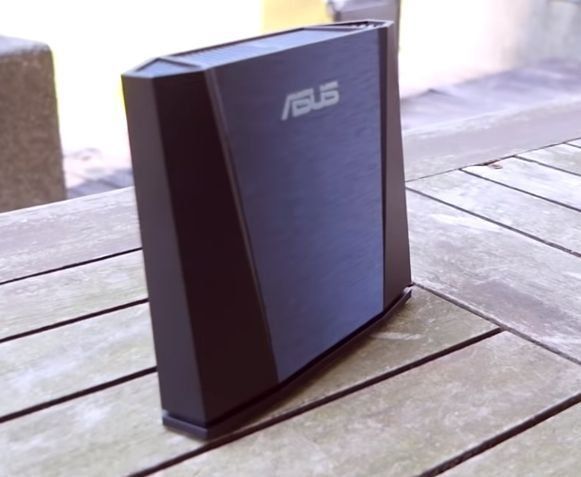
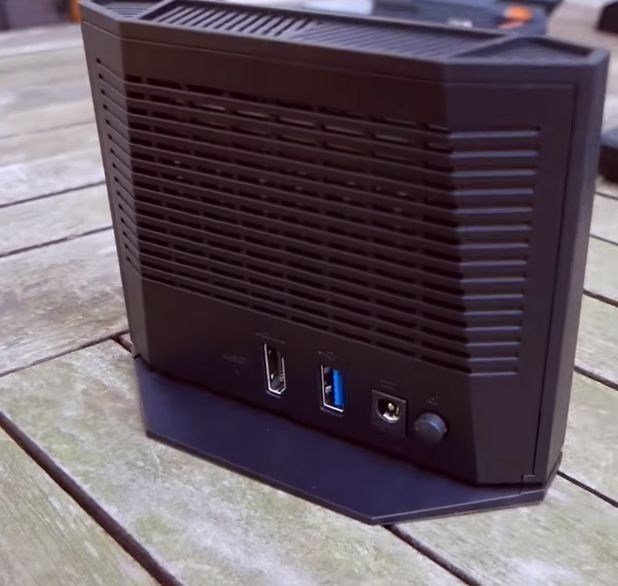
Professional Dock
This station is essentially a basic compact device for expanding the capabilities of a smartphone. By connecting it via USB TypeC to ROG phone, you get two USB 3.1 ports, HDMI and an Ethernet port. It is compact and convenient to take on a visit, and you can connect, for example, a keyboard and mouse to the USB outputs.
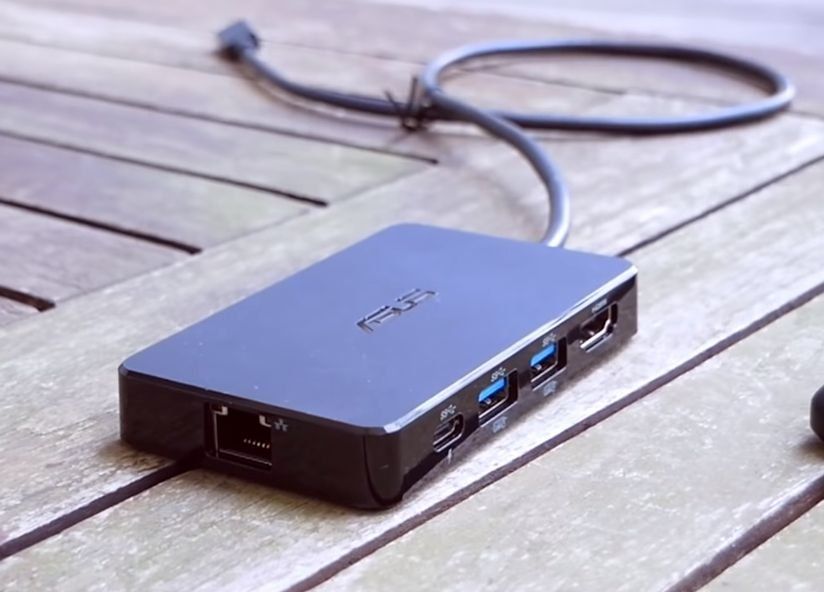
Mobile Desktop Dock
But this is something more interesting. In fact, it allows you to turn ROG Phone into a real PC. Even a computer motherboard will envy the number of outputs on it. It has everything you need to connect and even more:
- Four USB 3.1 outputs;
- TypeC port for charger;
- HDMI 2.0 port;
- One output for connection to a Display Port monitor;
- Ethernet connector;
- 3.5mm microphone jack;
- 3.5mm headphone jack.
By connecting it to a monitor, and it can even be connected to a 4K monitor, and plugging a keyboard and mouse into the appropriate input, you can play mobile games with the maximum convenience that a personal computer can provide.
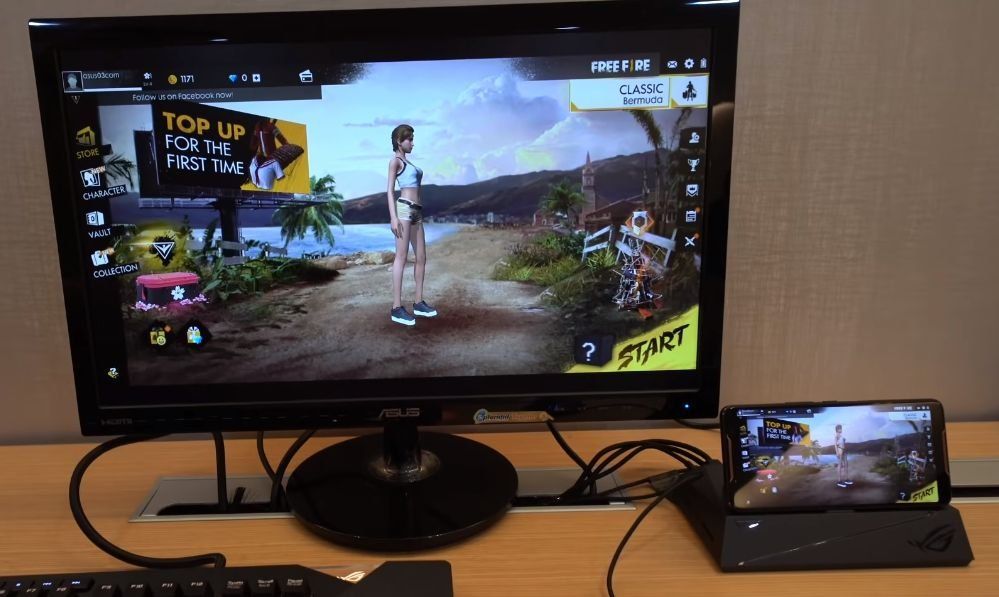
TwinView Dock
If you were missing the feel of a full-fledged game console when plugging in a Gamevice controller, the TwinView Dock is here to fix that. By investing a smartphone in this accessory, you will get an additional screen.
It looks exactly like a smartphone and has the same resolution. At first glance, you might even think that there are two phones here. This station has an additional 6000 mAh battery, which serves as both a power source for the second screen and additional power for the ROG Phone itself.
It also has additional TypeC connectors (how could it be without them), a memory card slot, a 3.5 audio output for headphones and additional cooling. It also has 2 mechanical trigger buttons for maximum convenience.
The second screen duplicates the image from the first and it is convenient to use it for control so that the fingers do not block the picture from the display. You can also use the sticks on the back of the station to control.
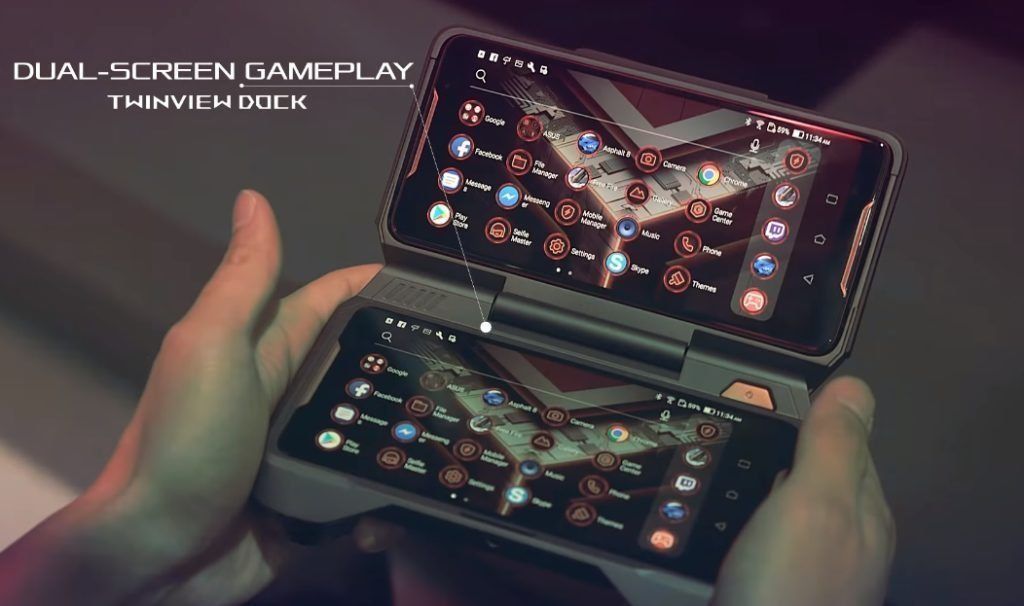
Case
Among other things, the set includes a case. We already thought that ASUS engineers would screw a couple of USB outputs and a memory slot to it, but they limited themselves to a regular plastic cover.
Her style is in harmony with the design of the smartphone itself. It has cutouts for the camera and biometric scanner, as well as a hole in the middle so that everyone can see the beautiful shimmering Republic of Gamers logo.
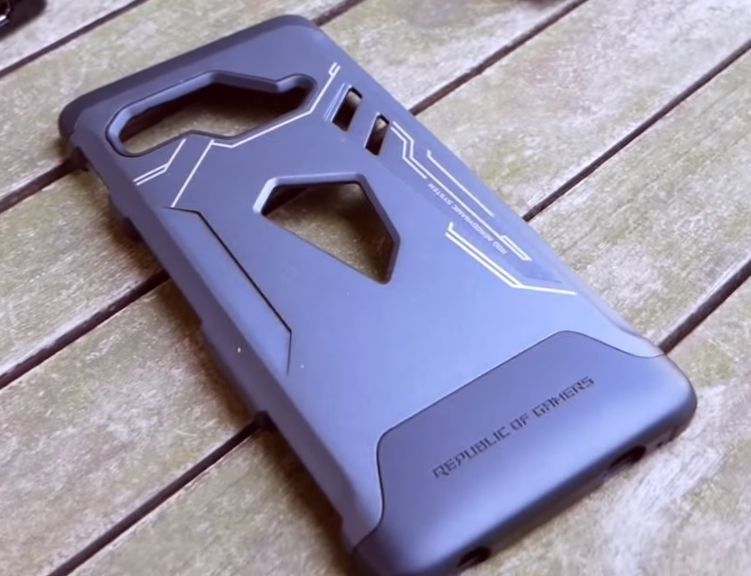
Price
And now to the bad news. This miracle of technology is expected to cost a pretty penny.
It is rather problematic to find it in stores in Belarus, Russia or Kazakhstan, but its price in online stores is:
- $900 for the base package, which includes a phone with 128 GB of memory and an external cooler.
- $1100 will cost a smartphone with 512 GB of internal memory without additional accessories, except for the cooler.
- $ 1600 will cost a complete set.
Advantages and disadvantages
- Nice gaming design. The smartphone looks bright and aggressive. After dominating the market with boring iPhone-like models, this device looks fresh and original. At the first glance at it, it is difficult to contain the enthusiastic “wow”.
- An interesting display with unusual characteristics.While there are screens with brighter, richer colors, few screens have this kind of color space coverage and incredible contrast. And you will not find such a screen refresh rate and response time anywhere else.
- Fast processor. Almost the fastest to date, and in games he has no equal at all.
- Good rear camera. Strange as it may seem, but the rear 12-megapixel camera can take pictures at the level of flagship models.
- Various peripherals. A huge number of plug-ins allows the phone to realize its full gaming potential.
- Sound. The two speakers deliver superb stereo sound. The sound through the headphones is also excellent.
- Front-camera. Pretty mediocre front camera without autofocus. However, it is doubtful that anyone who bought this phone will use it at all.
- Not quite clear situation with the cooling system. Especially with regards to the connected cooler. Is it so effective because of the glass panel?
- Compatibility of peripherals with mobile games. Since, apart from ASUS, no one has rolled out so many additional gaming devices to the phone on the mobile market, it is not entirely clear how games will behave if you want to play using, for example, the Gamevice controller, however, according to reviews, so far everything works fine.
- And, of course, the price. Not everyone can afford to buy such a phone in a complete set. And for $ 1600 you can build yourself a pretty decent computer for games.
Conclusion
Summing up all of the above, the phone turned out to be undoubtedly very interesting. In the segment of gaming smartphones, he is the undisputed leader. No one except ASUS has bothered so much with the gaming component of phones.So if you really like to play on your smartphone, and you already have a gaming PC, then this option is perfect for you.
If you do not take into account the price factor, then the main question is the demand for this device. Until now, there are still quite a few games on the smartphone that require such a serious approach.
Nevertheless, their number only increases over time and slowly but surely the line between a PC and a smartphone is blurred. Games are gradually acquiring their mobile versions, and it is only a matter of time before such devices flood the shelves of digital equipment stores. And now ASUS has already taken the first serious step in this direction.
new entries
Categories
Useful
Popular Articles
-

Top ranking of the best and cheapest scooters up to 50cc in 2025
Views: 131650 -

Rating of the best soundproofing materials for an apartment in 2025
Views: 127689 -

Rating of cheap analogues of expensive medicines for flu and colds for 2025
Views: 124518 -

The best men's sneakers in 2025
Views: 124032 -

The Best Complex Vitamins in 2025
Views: 121938 -

Top ranking of the best smartwatches 2025 - price-quality ratio
Views: 114979 -

The best paint for gray hair - top rating 2025
Views: 113394 -

Ranking of the best wood paints for interior work in 2025
Views: 110318 -

Rating of the best spinning reels in 2025
Views: 105328 -

Ranking of the best sex dolls for men for 2025
Views: 104365 -

Ranking of the best action cameras from China in 2025
Views: 102215 -

The most effective calcium preparations for adults and children in 2025
Views: 102011









